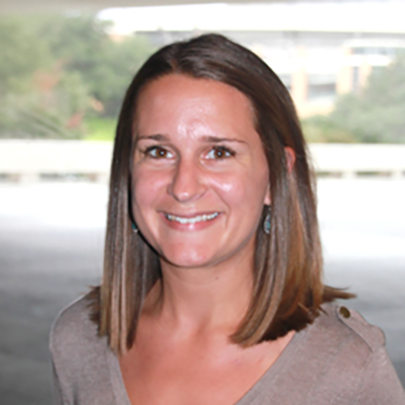By Jenna Somers

Early in her career, Cynthia Osborne learned that the pathway to opportunity is paved by much more than a quality education. In 1994, a few years after graduating from college, Osborne began teaching middle school while also obtaining her master’s degree in education. “My students were largely from socioeconomically disadvantaged backgrounds, and they taught me that while their classroom learning and my instruction mattered, it didn’t matter nearly as much as what was going on in their communities and in their families. That drew me to want to understand how families and communities can be better supported, so that all kids have the experiences that they deserve,” said Osborne, professor of early childhood education and policy and executive director of the Prenatal-to-3 Policy Impact Center at Vanderbilt Peabody College of education and human development.
Osborne earned a master’s degree in public policy at Harvard University (1999) and a Ph.D. in demography and public affairs at Princeton University (2003). While there, she collaborated on the Future of Families and Child Wellbeing Study (formerly the Fragile Families and Child Wellbeing study), which sharpened her desire to understand how public policies shape opportunity and outcomes, especially from birth.
In 2005, Osborne became a professor at the LBJ School of Public Affairs at the University of Texas at Austin. She conducted studies for Texas state agencies that wanted to know whether the policies they implemented were strengthening families and what more they could do to support families. These collaborations catalyzed Osborne’s focus on state-level policies, especially on how states decide who to serve and in what way.
“We had the opportunity to pursue a 51-state strategy—50 states and Washington, D.C.—to answer bigger questions about what states can do to ensure that kids get off to a healthy start,” Osborne said. “I was really excited about that opportunity to—not just think about the outside factors that are helping kids to learn in school, which are important—but to think about that system of care that helps kids really thrive across all health and well-being measures. That’s why I launched the Prenatal-to-3 Policy Impact Center.”
A resource for states
Osborne started the Prenatal-to-3 Policy Impact Center in 2019 at the University of Texas at Austin and brought it to Vanderbilt when she joined the Peabody College faculty in 2022. With 30 full-time staff and several student-workers, the center acts as a leading resource for states as they adopt and implement the most effective policies to ensure that all children thrive from the start.
According to Osborne, decades of research on the science of the developing child demonstrate that the prenatal-to-three period is the most rapid and sensitive developmental period that affects future health and well-being, and that certain environmental conditions are necessary to ensure children thrive even before they are born. These conditions are reflected in the center’s eight policy goals.
“We are not neutral to the policy goals, but we are neutral to the policy solutions that will help achieve those goals, and we are driven by evidence to inform us on what those solutions are,” Osborne said. “We don’t advocate for states to implement these solutions. We think of ourselves as educators and as a resource to help states meet their goals, and we approach them with the evidence on policies and programs and a better understanding of the problems they want to solve.”
The center’s policy team compiles and disseminates evidence through its Policy Clearinghouse and Prenatal-to-3 State Policy Roadmap, the center’s two primary resources for policy leaders, scholars, advocates, and funders. The Clearinghouse provides comprehensive reviews of the evidence on state-level policies and strategies intended to strengthen outcomes for infants, toddlers, and their families. Through their review process, the policy team identifies the most effective policies and strategies—meaning they improve outcomes related to at least one of the center’s policy goals—and includes these in the Roadmap, the center’s culminating project that helps states understand the effective policies and strategies and track their progress toward adopting and implementing them. The most recent edition of the Roadmap was released in October.

“We want the Roadmap to be a living document that will continue to change over time,” said Abby Lane, policy director. “It includes things that we know work, but just because something isn’t on the Roadmap doesn’t mean that it is ineffective. We might not have enough rigorous research yet to include it, or there might be policy levers that exist beyond the state level. So, we want states to use the Roadmap as a guide. We’re not saying, ‘Do only these things.’ We’re saying, ‘We know these things work, so start here.’”
Since the evidence base is only as large as what has been studied to date, the center’s research and evaluation team further builds the evidence by conducting research on state-level policies and programs and working with clients to evaluate their programs.
“What works, for whom, and why?”
These questions underlie the meaning of “effective” policy solutions and guide the center’s work.
“The Clearinghouse is all about understanding what works, for whom, and why,” Lane said. “We are interested in a specific subset of research that shows causal connections, so that we can make the case that if a state does A, then B will happen.”
But beyond establishing “what works,” evidence must demonstrate “for whom” a policy solution works. This is a question of equity, an aim of the center that underpins its eight guiding goals.
“Just as we’re not neutral to the policy goals—because the science on those is clear—we’re not neutral about the existence of inequities. The science and history are clear about the role of systemic racism,” Lane said. “If you look at a lot of the measures we report in the Roadmap, you can really see disparities in outcomes along racial, ethnic, and socioeconomic lines. The fact that those are systemic is the problem and indicates that there is something to correct.”

Stated another way, Jennifer Huffman, director of research, explained that these questions guide the research and evaluation team’s work as they examine policies and programs for equality and equity.
“With the first question, we’re asking does this policy or program deliver targeted outcomes for all families? If it’s effective, then it improves circumstances for all families. But the next question allows us to dig a little deeper. Is the gap in disparities between systematically marginalized families and everyone else closing? For groups who are not doing as well, we need to see policies and programs work better for them to say that a policy or program is reducing disparities and promoting equitable outcomes,” Huffman said.
The most effective policy
Paid family leave improves outcomes in seven of the center’s policy goals, making it the most effective policy included in the Roadmap. According to Osborne, it is one of the most pro-work and pro-family policies. Parents are more likely to return to pre-birth employment and receive wage increases, which increase tax revenues. It also improves health outcomes for the mother and child as well as bonding time, which supports healthier brain development in the infant. Moreover, Osborne says the program pays for itself usually through a payroll tax to which the employer and employee contribute, with large returns on their investment.
Because paid family leave is critical to both families and employers and it continues to be implemented in various ways across states, there is an urgent need for further research. Most of the evidence on paid family leave that the center has reviewed comes from California, the first state to implement the policy, initially at a minimum of six weeks, which is the threshold for effectiveness.
“Paid parental leave is a good example where we have robust evidence on its effectiveness, but we’ve identified gaps in the research that we’re working to fill. States now have longer policies and higher wage replacement rates, particularly for lower-income workers, so, we’re looking at national-level data to understand the outcomes in states that haven’t been studied as closely because their paid leave programs are newer,” Huffman said.
Partnering to solve the child care crisis
Child care subsidies are another of the most effective strategies in the Roadmap. They help low-income families whose parents are enrolled in education or training programs pay for child care. As important as child care subsidies are for many families, they address just one part of a much larger problem—the child care market crisis, which was exacerbated by the COVID-19 pandemic. Through the American Rescue Plan Act of 2021, the federal government subsidized child care centers, but, according to Osborne, states only have access to this federal funding for another three years, so they need to figure out now how to replace it with more permanent support.
“We’re working with states to better understand what it is they’re doing, and how they can more effectively ensure that families have access to affordable child care, that providers can keep their doors open, and that we can encourage educators to stay in the child care market,” Osborne said.
Texas is an example of one state that recently sought the center’s services. In 2021, the legislature charged the Texas Workforce Commission with developing a plan to support early childhood educators. The TWC collaborated with the center to convene the 2022 Texas Child Care Strategic Plan Workgroup—a group of 27 Texas child care experts—and administer the 2022 Texas Child Care Director Survey to more than 800 program directors across the state. Feedback from the workgroup and data from the surveys resulted in 11 recommendations for stabilizing the child care industry and improving workforce quality. The center also produced a series of research briefs based on the recommendations report, which describe the problems of low wages, lack of access to benefits for educators, instability in the industry due to retention challenges, and insufficient state subsidies for care.
“The report is being used by a lot of stakeholder groups as well as some regional level workforce boards in the State of Texas who are working to implement some of the recommendations at a regional level,” Huffman said. “Our work speaks to how many states are working to improve child care. There are numerous struggles in the industry across the country, so I feel like our work fits into a national conversation in an important way. I’m excited that we got to work with partners in Texas to help them address their child care industry needs.”
Answering the bigger question
“In academia, the work of the Prenatal-to-3 Policy Impact Center is relatively unique. Our staff must understand the concerns of policymakers, advocates, and educators—those on the ground who live and breathe this work. It’s our responsibility to learn their language and needs and to translate the complicated, nuanced science into actionable solutions that best suit them in meeting their goals,” Osborne said.
“It’s our responsibility to…translate the complicated, nuanced science into actionable solutions…”
Engaging in this type of research, that directly impacts the lives of children, is at the core of Peabody’s mission and the work of faculty across the college’s five departments. “That is why I am thrilled to be at Vanderbilt, to collaborate with Peabody’s early childhood experts across the college. We can work together to answer a question bigger than any one field can answer or any one scholar’s lifetime work can address. That is, how do we get all children to show up to school ready to succeed, and how do we ensure that the investments we make early don’t fade out but are sustained or grow over time?” Osborne said.
Answering these questions requires the collaboration of experts in education policy, developmental psychology and educational neuroscience, behavioral science, early childhood mental health, and much more. With accomplished faculty in all these fields, Peabody is currently developing plans for a new college-wide early childhood strategic initiative that will strengthen cross-departmental collaborations and serve as a community resource.
“Supporting our community will be an important mission of the new center,” Osborne said. “We want to both learn from the Metro Nashville area and to contribute in any way we can to ensure that all children in this area are thriving, with the hope that Nashville becomes a model in early childhood investments and practices for other Southern cities.”


